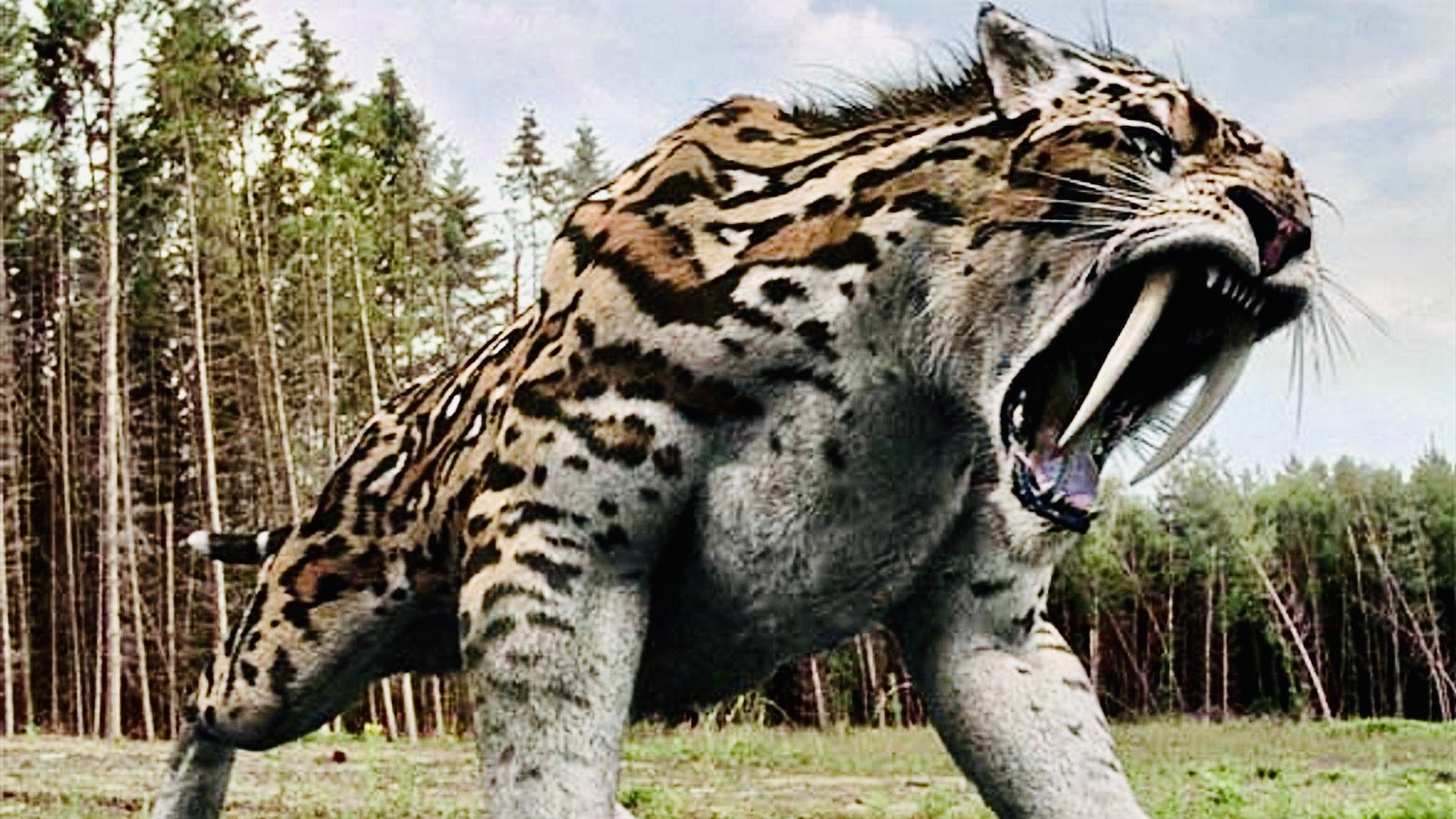priceless-stories.org – The saber-toothed tiger, a name that evokes images of a fierce predator with elongated canines, is one of the most iconic creatures of the prehistoric world. Despite its common name, it was not a true tiger but a member of the extinct subfamily Machairodontinae, which included various genera such as Smilodon, the most famous of all saber-toothed cats. These formidable predators roamed the Earth during the Ice Age, leaving a lasting impression on the landscape of ancient ecosystems.
The Rise of the Saber-Toothed Tiger
The evolution of saber-toothed tigers began approximately 33.9 million years ago during the Oligocene epoch. Their rise to prominence can be attributed to a unique set of adaptations that set them apart from other predators of their time. The most striking feature was their saber-like upper canines, which could grow up to 7 inches (18 cm) in length. These teeth were not only a formidable weapon but also a testament to the evolutionary pressures that shaped their hunting strategies.
Saber-toothed tigers were well-adapted to their environment, with powerful forelimbs equipped with retractable claws and a robust build that allowed them to take down large prey. Their skull structure was uniquely designed to accommodate the massive canines, with a wide gape that enabled them to deliver a fatal bite to the throat or torso of their victims.
The Fearsome Predator’s Hunting Tactics
The hunting tactics of saber-toothed tigers have been a subject of much debate among paleontologists. Unlike modern big cats, which rely on stealth and a powerful bite to the neck to suffocate their prey, saber-toothed tigers likely employed a different strategy. The current consensus suggests that they used their saber teeth to inflict deep, penetrating wounds on their prey, potentially targeting the underbelly or throat. This would have resulted in a rapid blood loss, incapacitating the prey and allowing the predator to feed.
Coexistence with Other Predators
Saber-toothed tigers shared their habitat with a variety of other predators, including early humans. The coexistence of these species would have led to competition for resources, but it also facilitated a complex web of interactions that shaped the dynamics of ancient ecosystems. The presence of saber-toothed tigers would have influenced the behavior and evolution of both prey and fellow predators, contributing to the rich biodiversity of the Pleistocene epoch.
The Fall of a Fearsome Predator
The decline of saber-toothed tigers began around 10,000 years ago, coinciding with the end of the last Ice Age. Several factors contributed to their extinction, including climate change, the disappearance of megafauna (their primary prey), and the increasing presence of humans. The changing climate altered the landscape, reducing the availability of suitable habitats and prey. Additionally, the rise of human populations and the development of more sophisticated hunting techniques put further pressure on these predators.
Legacy of the Saber-Toothed Tiger
Although saber-toothed tigers are extinct, their legacy lives on. They have captured the imagination of people for generations, featuring in art, literature, and popular culture. The study of these creatures provides valuable insights into the evolutionary history of carnivores and the dynamics of ancient ecosystems. Moreover, their extinction serves as a reminder of the fragility of life on Earth and the impact of environmental changes on biodiversity.
Conclusion
The saber-toothed tiger was a remarkable predator that dominated the ancient world. Its rise and fall offer a glimpse into the complex interplay of evolutionary forces, environmental changes, and human activities that shape the natural world. As we continue to uncover the secrets of these fearsome creatures, we are reminded of the rich tapestry of life that has existed on our planet and the importance of preserving the biodiversity that remains.
